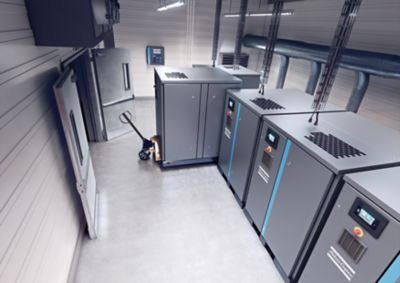How to select the right aeration blower for your waste water treatment plant?
Effluent treatment plants commonly known as ETPs, are an important part of any factory that requires water in their manufacturing processes. ETP cleans the waste-water or contaminated water of the industry which is also called industrial effluents and makes the water reusable for other purposes. The effluent treatment plants are most common in food, pharmaceuticals, textiles, tanneries, and chemical industries due to the nature of various applications and processes.
In current times, effluent treatment is important as per government regulations and environmental point of view. They help in reducing water pollution as well as water conservation. Many municipal corporations also focusing a lot on setting-up the waster water treatment plants or sewage treatment plants across the country.
One of the important equipment in any effluent treatment plant or wastewater treatment plant is the oil-free low-pressure air blowers which are used for many applications & processes like:
- Diffused aeration
- Filter backwashing
While the cost of a low-pressure blower can be as low as 5% of the total ETP’s investment cost, it is the running cost of the aeration blowers which constitute approximately 60% of the energy cost of the entire ETP. This is mainly because the air blowers have to run 24X7 to support the biological processes i.e. supply the right amount of oxygen to micro-organisms for their survival in the effluent treatment plant (ETP).
Therefore, it is highly recommended to choose the right blower technology to gain the best energy efficiency in your wastewater treatment or effluent treatment plant.
How to chose the right blower technology
Today an aeration tank with water column ranging 5m-6m is very common in the ETPs which provides a back pressure of 0.5 – 0.6 bar(g) on the aeration blowers. Also, the Oxygen Transfer Efficiency (OTE) in the aeration tank increases with an increase in the level of the water column.
The traditional Tri-Lobe Blowers are efficient until the water level in the aeration tank is less than 4m. This offers a back-pressure resistance of only 0.45 bar(g) or below. However, once the pressure crosses 0.5 bar(g) the twin Lobe and tri-lobe blowers start consuming high power and contribute to high energy cost for the ETPs.
Therefore, it is highly recommended to use the rotary screw blower technology for the pressures greater than 0.5 bar(g). The screw blowers are an average 30% better in energy efficiency compared to traditional Lobe Technology which is commonly known as roots blowers. The screw blowers are designed as per the latest innovative technologies which help you to save money by potential energy savings and reduce the environmental impact.
As screw blowers are direct-coupled/gear-driven machines, they are higher efficient than traditional belt-driven blowers. This efficiency gain comes from the fact that on an average belt driven machines have 5% - 7% more transmission losses compared to gear-driven machines.
Another important advantage of gear-driven oil-free screw blowers is that it has a wide turndown. If there is a wide variation in the influent capacity at various points during the day, or during various seasons, it will be of great help.
Further, it is highly recommended to use the dissolved oxygen (DO) meter feedback based blower control which not only supports the effective biological process in ETP but saves energy cost also.
Additionally, variable speed drive (VSD) or variable frequency drive (VFDs) blowers which runs based on dissolved oxygen (DO) meter feedback saves more energy when compared to fixed speed blowers. The noise reduction, remote monitoring, IoT have added advantages with screw blowers.

